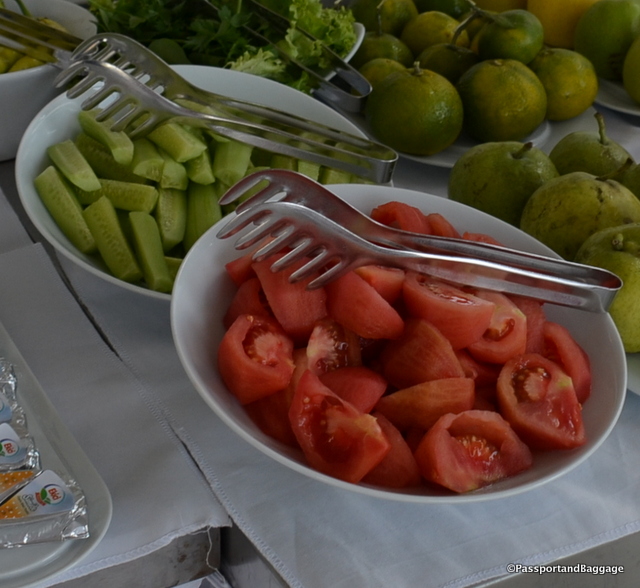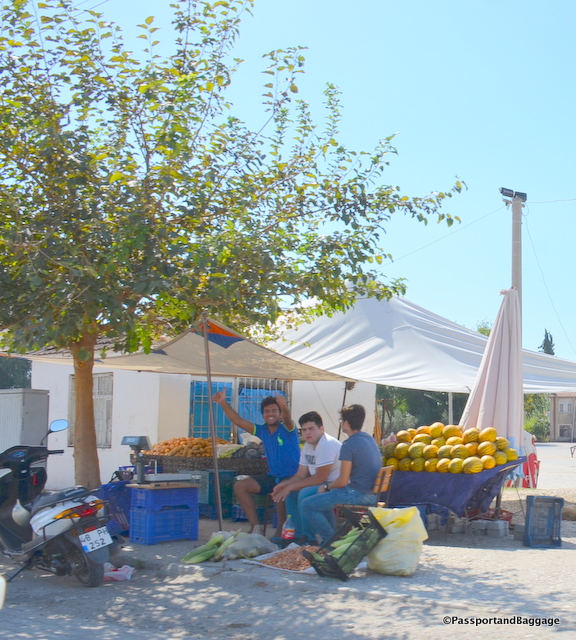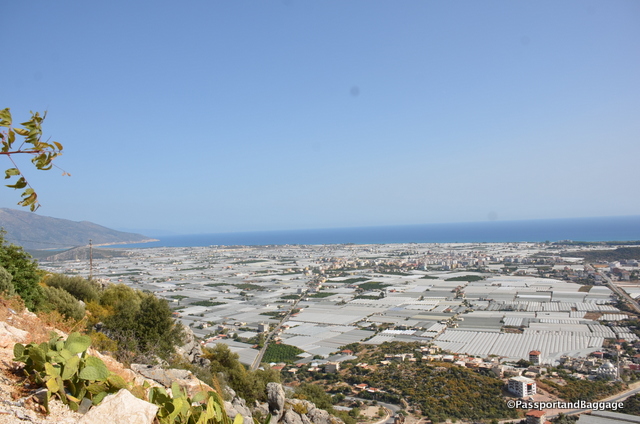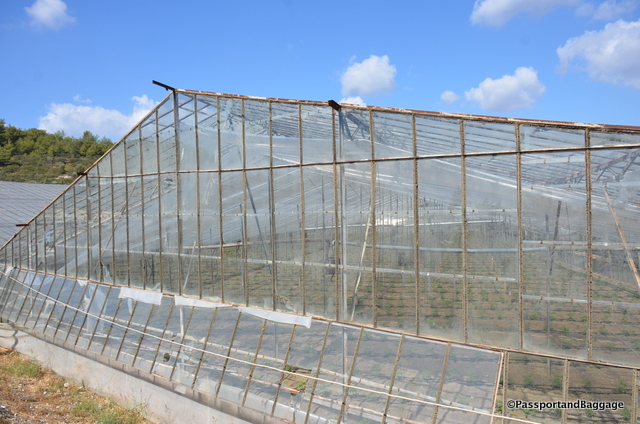October 9, 2016
 You will find tomatoes and cucumbers at every meal in Turkey; in fact there is a salad on every menu called a shepherd’s salad that is nothing but these two ingredients in one form or another. I would normally be thrilled with this, but the first few I had I realized immediately that the vegetables were hothouse grown and not as tasty and succulent as they look.
You will find tomatoes and cucumbers at every meal in Turkey; in fact there is a salad on every menu called a shepherd’s salad that is nothing but these two ingredients in one form or another. I would normally be thrilled with this, but the first few I had I realized immediately that the vegetables were hothouse grown and not as tasty and succulent as they look.
When we drove out of Antalya towards Kaş on the Mediterranean Sea, it all became clear.
Turkey began growing food in greenhouses near Anatalya in the 1940s with around 2500 acres throughout the region. The practice grew exponentially until the 1990s, with around 60,000 acres in 2002. Today 83% of all greenhouses in Turkey are in this region.
In 2000, 1.37 million tons of tomatoes, 1.04 million tons of cucumbers, 0.33 million tons of peppers, 0.18 million tons of eggplant, 0.080 million tons of squash, and 0.04 million tons of bean were produced in greenhouses in Turkey.
This originally began for domestic consumption, but with the increase of all of these greenhouses, growers began pursuing the export market and in 2002 the major crops begin exported were tomatoes and cucumbers for around $63million.
In driving throughout Turkey we have not witnessed any large farms, while I am sure there are some, it is not the norm.
According to the OECD, fragmentation of farmland is the main problem facing Turkish agriculture today. Largely to blame, as in many countries, are the country’s inheritance laws, which stipulate that 25% of a deceased landowner’s property should pass to their spouse, with the rest divided among the children. This means that the average farm is 15 acres.
The greenhouse situation is no different. Greenhouse production is generally carried out by small family-owned farms sitting on just over 3 acres, with greenhouses covering just under 1 acre of that land. Studies have shown that proper crop management and greenhouse construction are both highly flawed in these small operations, creating a need for excess fertilization, creating some severe environmental issues.
 We have also noticed hundreds of small vendors selling crops along the side of the road, it occurred to us that there was no central co-operative way to sell in Turkey, which was born out by a little research. It is not unusual to drive by trucks containing what appears to be at least one ton or more of pumpkins, potatoes, onions or the like, lined up for a mile or so. It is unfathomable that these people are making any money, or that the amount condensed into one area could possibly sell but a very small quantity of what is in their trucks and roadside stands.
We have also noticed hundreds of small vendors selling crops along the side of the road, it occurred to us that there was no central co-operative way to sell in Turkey, which was born out by a little research. It is not unusual to drive by trucks containing what appears to be at least one ton or more of pumpkins, potatoes, onions or the like, lined up for a mile or so. It is unfathomable that these people are making any money, or that the amount condensed into one area could possibly sell but a very small quantity of what is in their trucks and roadside stands.
The concept is difficult to grasp but as you drive through the rural farm areas of Turkey and observe the way things are done it is obvious that things are done as they have been for thousands of years. This is born out when you learn that in the farmlands workers are generally poorly educated and low skilled: as much as 15% of agricultural laborers are illiterate and only 78% have a primary education.
While all of this makes for either quaint photos or horrific photos of damage to the environment, it is important to remember that there are people behind all of this. The farmers of Turkey have it very difficult, not only with distribution, but with the price of fuel.
Much of this was being addressed when Turkey was pursuing inclusion into the EU, but where it will go with Turkey in such a state of flux, it is hard to say.

